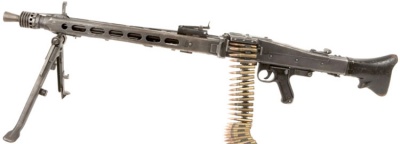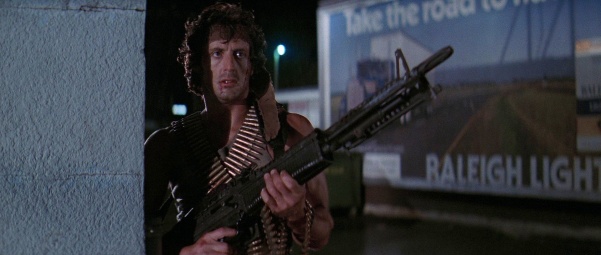Between its partition from the Austro-Hungarian empire in 1918, and its down-the-river sale at the hands of Neville “Like Obama, Only Just Clueless Rather Than Malevolent” Chamberlain twenty years later, Czechoslovakia actually had a brief vogue as an a-list industrial economy, backstayed by a weapons industry that rivaled Europe’s most legendary names; Brno, Czeskoslovenska Zbrojovka and Skoda were in the same league with Krupps, Enfield, Bofors, Hotchkiss, and Springfield.
They were behind some of the premier weapons of the inter-war era. The Skoda Model 38 tank was among the best in the world at the beginning of World War II
So superior was it to contemporary German designs that after the annexation, the Wehrmacht took the tank into service; they played a major role in the conquest of France (Rommel’s 7th Panzer, which led the charge to the Channel, led it in Panzer 38s) and the first part of the invasion of Russia. Outmoded as tanks by 1943, the Germans converted them to self-propelled artillery, anti-aircraft vehicles, and the famous “Hetzer” tank destroyer, which served into the 1970’s in Switzerland.
In the early 1930s, the world’s armies were starting to re-arm; war was clearly imminent, and their stockpiles of World War I-vintage weapons were old and wearing out.
During the war, machine guns were either heavy, water-cooled weapons fed by canvas or metal-link belts, capable of immense sustained fire but weighing 80-150 pounds loaded…:

A British “Vickers” heavy machine gun. Eighty pounds, with a jacket full of water but without ammo loaded. Ammo, and a water condenser can that accompanied the gun in action, not shown.
…or “light” guns extemporized during the war for infantry to haul around more handily.

The French Chauchat light machine gun. With its clunky, complex long-recoil system full of fragile moving parts, and its open-sided magazine practically designed to scoop up the mud that is synonymous with “trench warfare”, it may have been the single least reliable firearm ever issued in numbers. And it was close to 30 pounds – a heavy “light” gun.
The products of desperation, the “light” guns were rarely especially light, and often frighteningly unreliable, and incapable of much sustained fire before their barrels overheated, stopping them entirely.
The Czech Zbrojovka Brno – “Brno Weapons” – works developed a light machine gun in the mid-twenties which served as the starting-point for a new line of design. The “VZ26” was light enough for an infantryman to haul around…
A VZ26 in Czech service.
…but heavy enough to remain accurate when firing full-automatic, it had one other radical feature; a quick-change barrel. After a few magazines of sustained fire (interrupted by magazine changes, which slowed the overheating process a bit), the assistant gunner could unlock and (while wearing an asbestos glove) remove the barrel, and replace it with a spare that he carried for the purpose. If the crew was in heavy action, they could swap the two barrels back and forth, allowing one to cool while the other was firing.
The British Army, looking for a new light machine gun to replace its World War I-era Lewis guns, held trials in the mid-thirties – and the ZB26 swept the field (as it did for armies all over the globe; it still serves, in modified form, in the Paraguayan Army).
The British made two key modifications; they added a handle to the barrel (in case a gunner lost his asbestos glove in the heat of battle), and they rechambered it to their .303 Enfield round – a clunky old round with a rimmed base that necessitated the curved magazine on top.
And, using the peculiar British habit of the day of making new compound words for their weapons, they named it the “Bren” gun – short for “Brno”, where it was designed, and “Enfield”, where it was built in the UK.

The Brits had intended to adopt a rimless round – like the German 7.92 Mauser (which the ZB 26 used) or the American 30.06 – but their staff judged, correctly, that time didn’t permit such a radical change before the war would likely start (they didn’t finally retire the .303 from front line service until 1957).
No matter – the Bren worked just fine with the new round. They were built in mass lots, and equipped the British Army (and the parts of the Canadian and Australian armies that went into action) by the beginning of the war.
Reliable, relatively simple to manufacture, and ideal for its role – providing covering fire to a squad of 8-12 men as they leapfrogged forward and backward and around enemy positions, the Bren served out the war.
And then, like most “light machine guns”, it was supplanted by the latest military fad. The German military had dispensed with the separate categories of Heavy and Light machine gun, and generally equipped the Wehrmacht with just one machine gun – the MG34 or, later in the war, the dreaded MG42:

The MG42. Remember the machine gun in “Saving Private Ryan” that fired so fast it sounded like ripping carpet? That’s this one. The post-war German army kept the design, and it serves to this day in the German, Norwegian and (I think) Spanish armies.
That was it. They hung a tripod from the barrel, and issued it to their squads (of 8-12 men) for relatively light close-up covering fire; they’d mount it on a tripod, and issue it to crews of 3 men to haul it and its ammo around as a heavier fire-support weapon for companies of 160 or battalions of 800 men.
The world’s militaries jumped on that bandwagon hard. When the Brits re-tooled their ammunition and retired the Bren and Vickers guns, they adopted the Belgian FN-MAG as a “General Purpose Machine Gun”…:

The FN-MAG. It serves in most of the western world’s militaries today – including the US, as the M-240, as a company-level support weapon.
…capable of going into the field with a bipod as a squad support gun and a tripod in the weapons platoons of larger units.
The US adopted the M-60, which served from the early sixties into the nineties, but is probably most famous to non-serving Americans of a certain age range…:

Admit it.
…in Sylvester Stallone’s hands.
But along the way, an interesting thing happened.
During and among the world’s various brushfire wars of the sixties and seventies, infantrymen had a word or two with the world’s military theorists; the “light” version of the General Purpose Machine Gun wasn’t all that light when one was hauling it, a load of person gear, and a few belts of ammo through a jungle, or through the backstreets of Belfast.
And quietly, some of the world’s military units that had the clout to do so (or, conversely, the lack of clout that allowed them to get away with it), went back to the past. The British military – especially the Parachute Regiment and the Royal Marines – who depended on foot mobility, and needed something lighter than the clunky MAG for use in their rifle squads, quietly pulled the Brens out of the armories, and re-chambered them for the modern 7.62x51mm NATO caliber (same as the MAG and M60), and built some straight-walled magazines, and re-issued the Bren to elements of the British Army that needed a light, light machine gun:

A British Marine, armed with a rechambered Bren, in action in the Falkland Islands in 1982. An MAG gunner is in the background.
And it served in British reserve units through the 1990s, and in reserve units of the Irish army until 2006.
And that bit of tapdancing to fill a need for lighter, handier, but still reliable and powerful weapon at the squad level led to a wave of design of genuinely *light* machine guns, including the US’ modern “M249 Squad Automatic Weapon” – which is another light machine gun.
“But wait, Mitch”, you may say. “Hot Gear Friday is supposed to refer to hot gear – guitars and firearms, mostly – that you’ve personally used, yourself. What gives?”
Well, you’re right. But we’ll be fixing that tomorow, with any luck. Rumor has it that a .303 Bren is among the pieces for rent at Bill’s Gun Shop and Range – where I’ll be tomorrow for the Shooter Show. And I’ve been putting away a couple bucks a months since last March, getting ready to light up some targets with it, about this time tomorrow.

G.A.S., Mitch. While I can’t predict which LMGs and SMGs will at Bill’s, I can say that he {the manufacturer} does indeed have a Bren gun, complete with happy switch. Being a sinister person myself, I had to pass on the Bren, and go with the Browning auto Rifle. On tech note, the ZB26 was kept in production by the Germans and was a popular LMG. The 7.62mm Bren used lengthened FAL mags, so the regular 20rd rifle mags could also be used. During WWII, the Bren kind of returned to it’s roots when was built in Canada in 8X57 Mauser for the Chinese Army. I could go on, but my initials are not D.G. TTFN